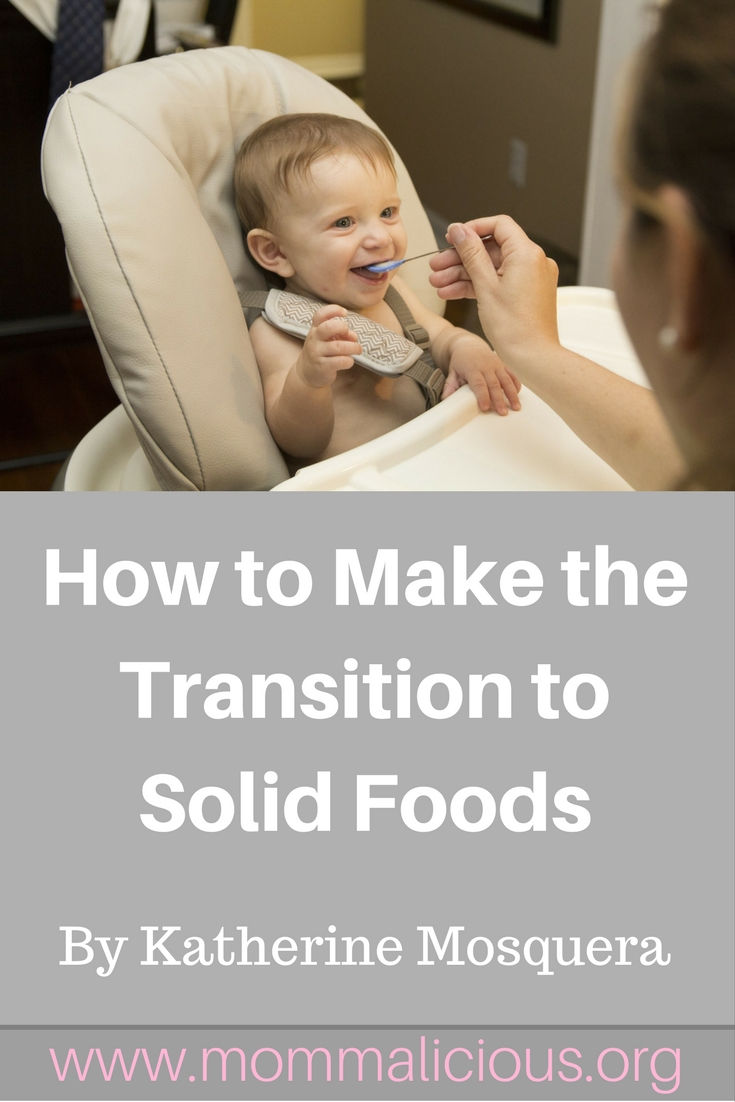How to Make the Transition to Solid Foods
- By Katherine Mosquera
- Feb 14, 2018
- 3 min read

Does it look like your baby might be ready to transition from liquids to solid foods? It can be a little daunting, but as long as you take things slowly and make changes gradually, this can be a really wonderful time for both your little one and you. It does take time, but babies have an innate sense that’ll help them make the move, with plenty of encouragement from you. Here are a handful of top tips to help you help your beautiful little one transition to solid food.
Wait until they’re ready
There’s no rush to get your baby onto solid foods; let them come to it in their own time with your encouragement. Generally around six months is when they’ll be ready to transition, as this tends to be when they learn how to move food from the front of their mouth to the back and swallow. Age isn’t the main determining factor when switching to solid foods, though; there are physical signs that signify that they may be ready to try. These include:
Mouthing at their toys and hands
Holding their head upright and steady
Sitting with support
Looking interested in what you’re eating
Any time you’re not sure just seek advice from your medical professional; they’ll be able to reassure you and tell you whether baby’s ready.
Start with soft foods
One thing you definitely don’t want to do is start off with any hard foods. For one, they don’t have the teeth to cope with them, and two, it’s too much of a leap from liquids. A good rule of thumb is that if you can mash it up, it’s worth a try. Avocados, bananas, carrots and sweet potatoes are ideal and very nutritious, and you can increase the amount of texture in these gradually.
Introduce one new food at a time
When introducing new food it’s best to stick to one type at a time. Any more than this can be a bit confusing. You’ve got a better chance of seeing if they have any reactions to certain food and what they like if you try foods one by one. If it’s not all mashed into a puree, it’s really important to cut everything up into tiny pieces so that they can learn to feel what that’s like in their mouth and not risk choking. Gradually, as they get more teeth and start learning how to chew, you can increase the size of the pieces bit by bit. Just remember there’s no rush; slowly, slowly is the way.
Be persistent and patient
Anyone who’s had kids will tell you how long meal times can take, especially when babies transition to solid foods. Don’t think you’re struggling because it’s not happening instantly, be prepared for hour-long sittings… and more. The key is to be patient, consistent and persistent. Let them explore new foods and don’t be too concerned about the mess.
Now, babies can be fussy eaters, so if you notice that there’s a food they don’t like much, there’s no need to give up with it. Mashed potatoes for example, could be made tastier for baby if you add a tiny amount of ketchup, or another safe dressing/sauce. Not to worry about the stain that could happen when baby rebels before realising it’s delicious, just find out how to remove ketchup from clothes and all is well!
Hopefully you’re now feeling confident about moving your baby onto solid foods when they’re ready. Put these tips into action and the transition may be easier than you think, complete with tips on how to remove ketchup from clothes in the case of a feeding mishap!
About the Author
'This post was written in collaboration with Katherine Mosquera and Eleanor Cains - Eleanor has written for various food and lifestyle blogs and continues to work alongside Mavens of London to create immersive articles and blog content.' - 'Katherine has written and edited a range of articles from home and lifestyle, to food and fashion, and is currently a content creator/author at Mavens of London.'












































Comments